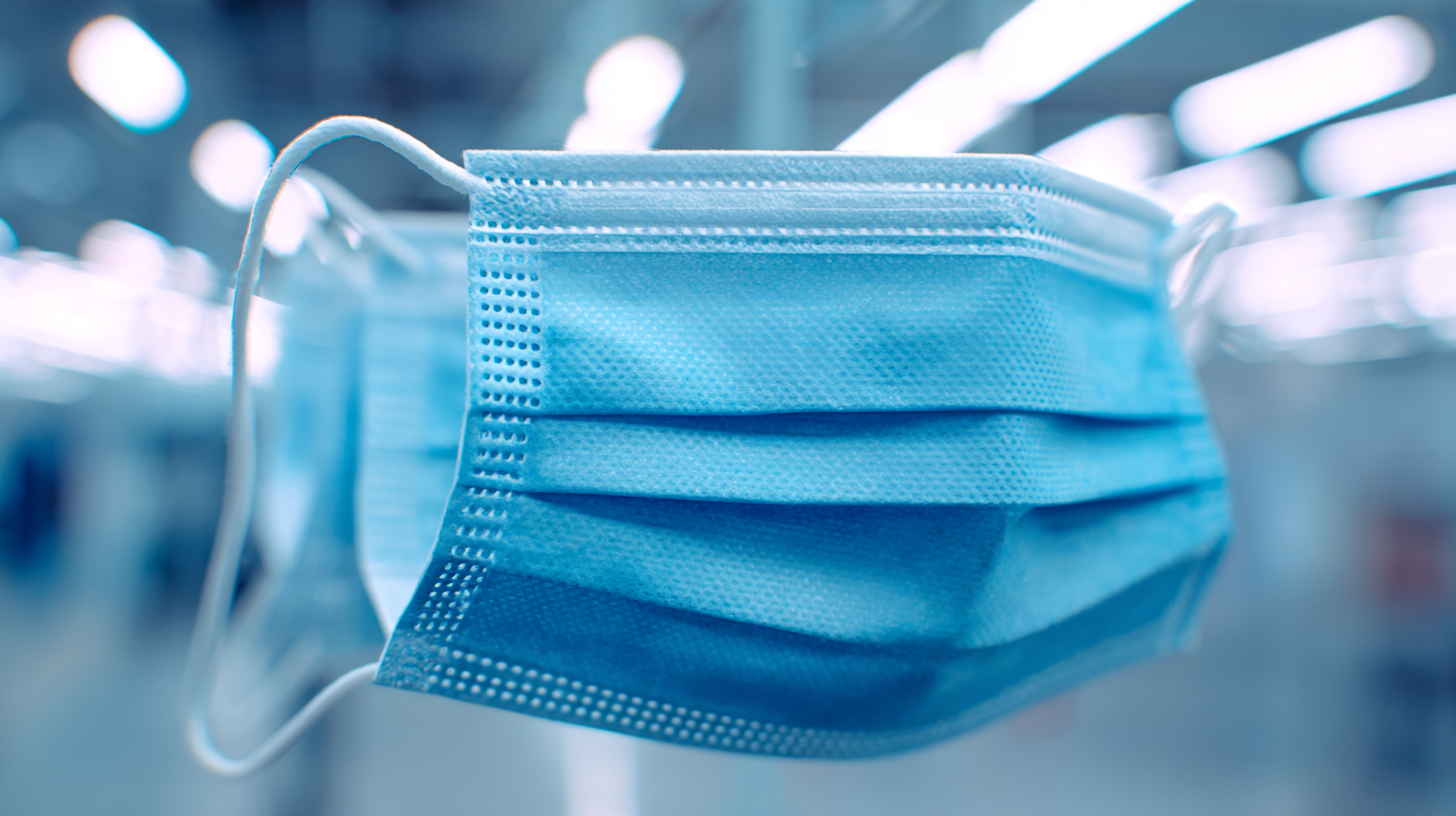

In an era where global health challenges continuously evolve, the importance of selecting the right Medical Mask for procurement purposes cannot be overstated. As we look toward 2025, understanding the technological advancements and emerging trends in the medical field becomes critical for organizations aiming to enhance their safety protocols. This blog will explore the eight key considerations for choosing the best Medical Mask, not only focusing on functionality and compliance but also on the long-term benefits these products can bring to healthcare systems worldwide. From innovative materials to improved filtration technologies, the future of Medical Masks will play a vital role in public health strategies, ultimately ensuring that we are well-prepared to face the challenges ahead.

When it comes to global procurement strategies, incorporating high-quality medical masks is essential for safeguarding public health and ensuring operational efficiency. High-quality masks not only provide superior filtration but also enhance comfort for extended wear, making them crucial in high-demand environments such as hospitals, clinics, and laboratories. By prioritizing these protective items, organizations can reduce the likelihood of contamination and improve patient and staff safety.
To select the best medical masks, consider the following tips: First, look for masks that meet recognized international standards, such as ASTM or EN. These certifications guarantee that the masks have undergone rigorous testing for filtration efficiency. Additionally, evaluate the design and fit of the mask; a well-fitted mask can significantly reduce the risk of airborne transmission. Finally, consider the source of the masks; procuring from reputable suppliers who maintain ethical manufacturing practices can ensure not only the quality of your masks but also support global standards in procurement.
Incorporating high-quality medical masks into your supply chain provides not just a health safeguard but also enhances the credibility of your procurement process. By making informed decisions, organizations can better navigate the complexities of global supply chains while ensuring the utmost safety for their personnel and communities.

When assessing medical mask suppliers, it is crucial to consider several key factors that can significantly affect your global procurement needs. First and foremost, compliance with international standards such as ASTM and ISO certifications should be a priority. According to a recent report by MarketsandMarkets, the global demand for medical masks is expected to reach USD 17.4 billion by 2025, highlighting the importance of sourcing from reliable manufacturers who meet these stringent standards.
In addition to compliance, evaluating the supplier's production capacity is essential. Suppliers should be able to demonstrate that they can meet your volume requirements without sacrificing quality. A recent survey indicated that 60% of procurement managers find production delays to be a major challenge when sourcing medical supplies. Therefore, confirm that your supplier has the infrastructure to scale as needed.
Tip: Always request samples before committing to large orders. This allows you to assess the quality of the masks firsthand and ensures they meet your specifications. Furthermore, staying informed about the latest trends in mask technology, such as the development of antimicrobial materials and enhanced filtration capabilities, can provide a competitive edge in your procurement strategy.
When it comes to global procurement of medical masks, understanding the differences among the various types available is crucial. There are primarily three categories of masks: surgical masks, N95 respirators, and cloth masks. Surgical masks are designed to provide a barrier against large droplets and splashes, making them ideal for low-risk situations. However, they do not filter particles as effectively as N95 respirators, which provide a higher level of protection by filtering out 95% of airborne particles. Thus, for high-risk environments, N95 masks are often recommended.
In addition to filtration capabilities, comfort, and breathability are also significant factors to consider when selecting a medical mask. Surgical masks tend to be more comfortable for prolonged wear in clinical settings, while N95 respirators, despite their superior protection, may cause discomfort due to their snug fit. Cloth masks, while less protective, can be suitable for personal use in lower-risk situations and allow for various designs and patterns, making them popular for everyday wear.
Understanding the intended use and risk level is essential for making an informed procurement decision that balances safety, comfort, and practicality.
As the demand for medical masks continues to rise, understanding future market trends is crucial for informed procurement decisions. With the global healthcare landscape evolving, experts predict a significant shift towards sustainable and innovative materials by 2025. Manufacturers are increasingly investing in eco-friendly alternatives, which not only reduce environmental impact but also enhance the overall user experience. Buyers should prioritize suppliers that emphasize sustainability in their production processes to ensure compliance with upcoming regulations and consumer expectations.
One important tip for selecting the ideal medical mask is to assess the filtration efficiency alongside comfort. Masks that provide high filtration without compromising breathability will likely dominate the market. Look for certifications that verify both these attributes, such as ASTM F2100 standards. Additionally, consider the manufacturing transparency of suppliers. Understanding where and how masks are produced can provide insights into their quality and reliability, helping you make better procurement choices in a competitive marketplace. Seeking out manufacturers that offer traceability in their supply chain can also ensure that you are investing in safer and more effective medical supplies.

When it comes to procuring medical masks effectively, real-world examples can offer invaluable insights into successful strategies. For instance, a leading healthcare provider in Europe recently faced a significant shortage of N95 masks amid a sudden surge in demand. They quickly pivoted their procurement strategy by leveraging local manufacturers, which not only reduced lead times but also supported the regional economy. This agile response allowed them to maintain a steady supply of masks while fostering community partnerships.
Another illustrative case is a global NGO that set up a centralized procurement system during the pandemic. By collaborating with diverse suppliers across different regions, they minimized risks associated with supply chain disruptions common during crises. This approach empowered them to secure high-quality masks at competitive prices while ensuring compliance with international health standards. Such models highlight the importance of flexibility and collaboration in the procurement process, enabling organizations to navigate challenges and meet their medical supply needs effectively.